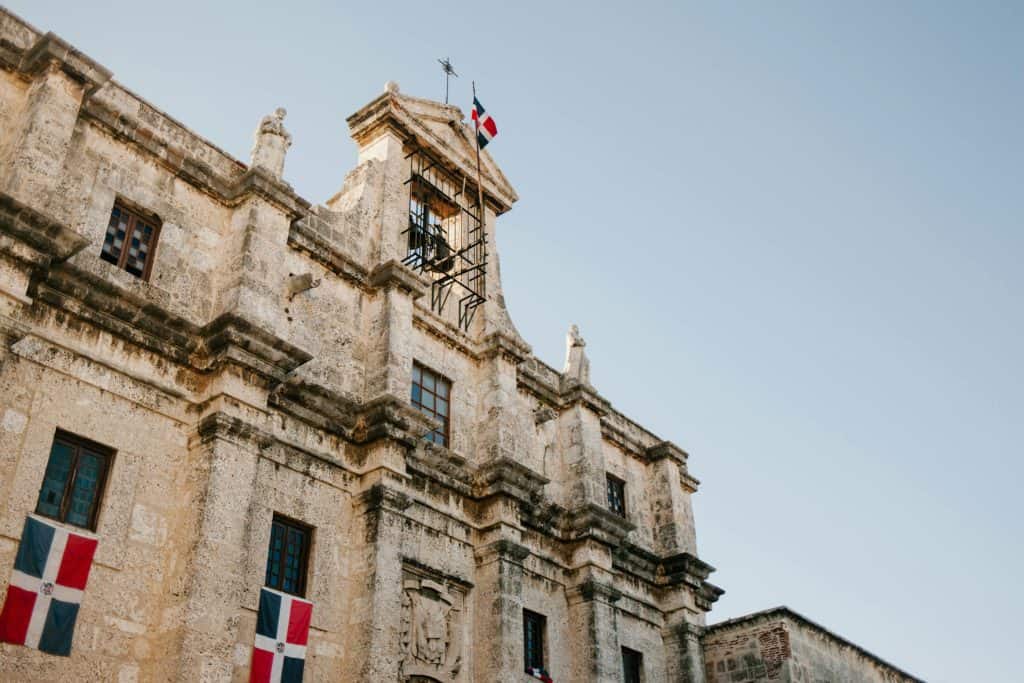La boda donde aprendí que “gastar” no siempre significa “to spend”
I still remember the smell of fresh coffee mixed with aerosol hairspray the first time I tagged along with my Dominican friend Lissette to pick up her rented wedding dress in Santiago. Ten years in the country have trained me to keep my ears open, but the bridal shop was a linguistic roller-coaster. The seamstress tapped a pin cushion against her wrist and told Lissette, “Si sigues gastando la cintura te va a quedar flojo el sábado.” I froze. My textbook brain heard “If you keep spending the waist…” Of course, in Dominican Spanish, gastar can also mean “to wear down” or “shrink.” That moment reminded me why I still actively learn Spanish every single day, especially when fashion and regionalisms collide. This post unpacks that experience so fellow expats can glide through fittings and alterations without linguistic wardrobe malfunctions.
Preparativos nupciales y la primera vez que me equivoqué de talla
A month before the ceremony, Lissette invited me to the initial prueba de vestido. The shop was a colonial-era house painted coral pink, tucked behind Santiago’s Monumento. Inside, rows of ivory gowns swayed in the fan’s breeze like lazy Caribbean ghosts. The owner, Doña Claribel, greeted us with the typical Dominican sing-song cadence: “¡Holaaaa, corazoncitos, pasen, pasen!” My beginner brain wanted to answer in formal, textbook Spanish, yet her warmth demanded equal informality. In that space, ustedes vanished; ustedes became the affectionate ustedes peppered with diminutives, and I realized again that to truly learn Spanish we must dress our words in local fabric.
Lissette slipped into a mermaid-cut gown, and Claribel asked me to zip it. She warned, “No lo subas de un jalón, que se desbarata el cierre.” I translated silently: “Don’t yank it up, because the zipper will come apart.” I almost responded “Entiendo,” but in the DR, that can sound cold. The natural reply is “Ah, pues está bien, tranquila.” Culture seeps through every seam; you acknowledge concern, then soothe it away. Colombians would say, “Listo, no te preocupes,” more clipped, almost musical. Earlier, my Spanish teachers taught me grammar; Claribel taught me emotional tailoring.
Entre tutú y tableado: vocabulario que no aparece en Duolingo
Dominicans often refer to the skirt layers as tutú (yes, like a ballerina) or tableado for pleated fabric. Colombians prefer capa or simply pliegues. If you’ve only studied neutral textbook terms, the fitting room feels like a different language. Each time I visit Medellín for a coffee break from island life, the paisa seamstresses charm me with “amor” and “precioso,” words less sugary yet equally affectionate. Compare that with the Dominican “mi cielo” and “mi vida,” and you’ll realize Caribbean Spanish bathes every phrase in syrup.
Las particularidades dominicanas: de los pajaritos al busto princesa
After the first fitting, we scheduled alterations. In the Dominican Republic, renting a dress often includes unlimited retoques because heat, humidity, and celebratory eating habits fluctuate waistlines faster than you can say mangú. When Claribel measured the bust, she whispered, “Te voy a poner pajaritos para que se te vea el pecho más bonito.” I blinked. Birds? No, pajaritos are tiny pads inserted for lift. Colombians would call them realces. Knowing such micro-regional terms helped me sound less like a walking dictionary and more like someone who lived the culture. That is the goal when we expats learn Spanish: to weave ourselves into everyday fabric.
Dominican bridal slang fascinates me. A trumpet skirt is often a bata sirena, literally “mermaid robe,” while in Bogotá you’ll hear corte trompeta. If you ask a Dominican modista for a “corte trompeta,” she’ll understand but may chuckle at your imported vocabulary. Humor is a gentle reminder that Spanish is a continent-sized quilt; every patch has a story.
Costumbre cultural: el coro en la modista
Dominican brides rarely attend a fitting alone. A coro—friends, cousins, sometimes the neighborhood colmado guy who sells the best Presidente beer—pile into the tiny atelier. They offer unsolicited opinions fueled by bachata playing on someone’s phone. In Colombia, fittings feel more intimate, maybe one or two relatives, soft ballads in the background. Neither customs are right or wrong. They simply shape how you should practice your Spanish. In a Dominican chorus you must speak louder, defend your taste, and joke quickly; in Medellín, you lean into politeness and let the seamstress lead. Two countries, two conversational rhythms—sharpening the bilingual ear requires dancing to both.
Cuando la sastrería cruza el Caribe: lo que me dijeron en Medellín
Last year I flew to Medellín to escape hurricane season and was roped into helping my Colombian friend Laura tweak her own rented dress. The tailor, Don Hernando, adjusted the hem and muttered, “Este forro está muy tacaño.” He wasn’t calling anyone stingy; he meant the lining was too tight. Dominicans would say apretado or even the anglicism “fit.” Different thread, same fabric. Later he warned, “El dobladillo tiene que quedar prolijo, sino se ve ordinario.” In the DR, the same critique would be “Ese ruedo debe quedar limpio pa’ que no se vea feo.” Small lexical switches like prolijo versus limpio make or break authenticity.
Traveling repeatedly between the DR and Colombia forces me to learn Spanish at warp speed. My ear recalibrates from Dominican syllable-dropping—está becomes ta—to Colombian consonant crispness where words finish every letter like well-pressed trousers. I recommend fellow expats hop borders frequently; hearing both extremes widens your Spanish comfort zone as much as that rented corset.
Tips camiseteados entre café y ron
If you schedule fittings in the DR, arrive “a la hora dominicana,” which can mean thirty minutes late and still polite. Colombians, though famously laid-back, treat tailor appointments more like a Swiss train. Punctuality shifts your vocabulary too: in Santo Domingo you’ll call to say, “Llegué, pero dame diez minuticos que busco parqueo,” while in Medellín it’s “Ya estoy abajo, ¿te subo el vestido?” Mastering punctual chatter is an overlooked way to learn Spanish pragmatically.
Spanish Vocabulary
| Spanish | English | Usage Tip |
|---|---|---|
| Retoque | Alteration | Common in DR and Colombia; often plural as “retoces.” |
| Pajaritos | Padding inserts | Dominican term; Colombians say “realces.” |
| Forro | Lining | Colombian tailors use it often; in DR, “fondo.” |
| Doblillo / Ruedo | Hem | “Doblillo” in Colombia; “ruedo” in DR, but both understood. |
| Tableado | Pleated skirt | Dominican; literal from “tabla” (board). |
| Busto princesa | Sweetheart neckline | Caribbean flair; Colombians might say “escote corazón.” |
| Talla corrida | Odd sizing | Dominican shops when sizes shift mid-production. |
| Entalle | Waist-in fitting | Useful when requesting a tighter silhouette. |
Ejemplo de conversación en la sastrería
Setting: Santiago bridal shop, DR, with references to Colombian alternatives.
“¿Te queda cómodo el busto o lo sientes muy apretado, mi vida?” (DR, informal)
Does the bust feel comfortable or do you feel it’s too tight, my dear?
“Creo que necesito un poquito más de espacio, pero sin que se vea suelto.”
I think I need a little more room, but without it looking loose.
“Perfecto. Le metemos medio centímetro y listo.” (Common in both countries)
Perfect. We’ll take it in half a centimeter and that’s it.
“En Colombia dirían ‘le ajustamos’, ¿cierto?” (Mixing cultures)
In Colombia they would say ‘we adjust it,’ right?
“¡Exacto! Allá no usan ‘meter’ para eso.”
Exactly! Over there they don’t use ‘meter’ for that.
“¿Y el ruedo? Porque la novia quiere bailar bachata sin pisarlo.” (DR context)
And the hem? Because the bride wants to dance bachata without stepping on it.
“Tranquila, lo dejamos a ras del piso con tacones. En Medellín lo dejé un pelín más corto para el vallenato.” (Mention Colombia)
Relax, we’ll leave it brushing the floor with heels. In Medellín I left it a tad shorter for vallenato.
“¡Qué nota! **Bacán** que sepas de los dos estilos.” (Colombia slang ‘bacán’ in bold)
How cool! Awesome that you know both styles.
“Bueno, mi cielo, pásate el jueves a las cinco, hora dominicana, ya tú sabes.” (DR humor)
Alright, my dear, swing by Thursday at five, Dominican time, you know how it is.
“Ok, pero te voy a llegar a las cinco en punto, estilo paisa.”
Okay, but I’ll arrive right at five, paisa style.
Both laugh, proving language is a fabric best stretched until it fits every culture.
Afilar el oído entre merengue y vallenato
When people ask why I shuttle between an island famous for merengue and a mountain valley that breathes vallenato, I tell them language loves contrast. The Dominican Republic taught me to drop S-sounds and elongate vowels like a lazy hammock. Colombia trained me to pronounce each consonant as if carving coffee beans. Moving between the two is a sonic workout; my Spanish ear does linguistic lunges. You can memorize vocabulary lists, but to truly learn Spanish as an expat you need ambient noise: guaguas honking in Santo Domingo, Medellín’s metro whirring, grandmothers bargaining over avocados in the mercado.
Every wedding dress fitting became a micro-class. I learned that a zipper isn’t just cremallera; it’s sometimes zipper (yes, Dominican Spanglish), or cierre. A bustle is coletilla in Medellín and alzacuello in some Dominican towns, though that last word also means priest collar—context decides everything. By chatting with tailors, I picked up sewing verbs like hilvanar (to baste) and fun idioms such as “Ese vestido está pintado en ti” (“That dress is painted on you”), which Dominicans sling as a compliment.
To anyone reading, pack a notebook next time you accompany a friend to a fitting. Write down the noun strangers call an object you thought had only one name. Sketch a quick dress outline and label each part in Spanish. Later, compare with a Colombian or Mexican friend. You’ll see Spanish as a fashion house with multiple runways, each flaunting its own style. That pluralism will keep your curiosity stitched tight long after you master subjunctive mood.
Consejo final entre agujas y acentos
Your bilingual journey is the ultimate rental gown—always yours for the event but ready for tweaks as life expands your waistline of experience. Stay humble like an unhemmed dress. Ask tailors, taxi drivers, and tía-type onlookers for synonyms. Record their answers, pronounce them aloud, then slip them into conversation before they gather linguistic dust. In short, keep measuring, keep pinning, and never assume the first fitting is final.
I invite you to comment below with any Caribbean or Andean fashion vocab that surprised you, or tales of cross-country culture shock that sharpened your Spanish ear. Let’s keep this conversation flowing like a satin train down the aisle—and in doing so, we’ll all continue to learn Spanish one hemline at a time.


